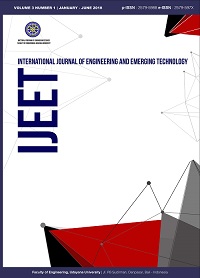CONFLICT OF INTEREST IN GREEN OPEN SPACE PLANNING IN DENPASAR CITY
Abstract
This research is a response to the regional regulations high intensity violations phenomenon in governing the green open space in Denpasar City. The emergence of this phenomenon as a consequence of a regional regulation core, which is policy taken by the government as a result of synergy, compromise or even competition -in this research called as conflict- between ideas, theories, ideologies and interests. These various interests are the research’s main focus to aim the conflict of interest better understanding in open planning green space of Denpasar City, as part of public policy oriented to the relationship of the planning and development systems of the city. This research is designed using qualitative approach with interpretive method. Problems are examined through three elements of research, namely: (1) green open space in the context of spatial planning and formation; (2) interests involved in green open space planning; and (3) the influence of various interests on the existence of green open space. The findings of the study are that in the context of regional spatial planning, the emergence of violations phenomenon of regional regulations regarding green open spaces in the Denpasar City occurs because of three main conflicts, based on: (1) economic conflict; (2) political conflict; and (3) cultural conflicts. These three main conflicts then trigger the emergence of land use conflicts that threaten the existence of green open spaces in Denpasar City.
Downloads
References
[2] Anonim. “Undang-Undang Republik Indonesia Nomor 26 Tahun 2007 tentang Penataan Ruang’, 2007.
[3] Anonim. “Peraturan Menteri Dalam Negeri Nomor 1 Tahun 2007 tentang Penataan Ruang Terbuka Hijau Kawasan Perkotaan, 2007.
[4] Anonim. “Peraturan Menteri Pekerjaan Umum Nomor 05/PRT/M/2008 tentang Pedoman Penyediaan dan Pemanfaatan Ruang Terbuka Hijau di Kawasan Perkotaan” Jakarta: Direktorat Jenderal Penataan Ruang. Departemen Pekerjaan Umum, 2008.
[5] Anonim. “Peraturan Daerah Provinsi Bali Nomor 16 Tahun 2009 tentang Rencana Tata Ruang Wilayah Provinsi Bali Tahun 2009-2029”, Denpasar: Pemerintah Provinsi Bali, 2009.
[6] Anonim. “Peraturan Daerah Kota Denpasar Nomor 27 Tahun 2011 tentang Rencana Tata Ruang Wilayah Kota Denpasar Tahun 2011-2031” Denpasar: Pemerintah Kota Denpasar, 2011.
[7] Hakim, R. “ Analisis Kebijakan Pengelolaan Ruang Terbuka Hijau Kota DKI Jakarta” thesis, Bandung: Institut Teknologi Bandung, 2000.
[8] Carr, S., Francis, M., Rivlin, L. G. and Stone, A. M. “Public Space” USA: Cambridge University Press, 1992.
[9] Darmawan, E. “Analisa Ruang Publik Arsitektur Kota” Semarang: Badan Penerbit Universitas Diponegoro, 2005.
[10] Moleong, L. J. “Metodelogi Penelitian Kualitatif” Bandung: PT. Remaja Rosdakarya, 1994.
[11] Mudra, I K. “Making Place for Cultural Legacies, Creative Culture, and the Tourist
Development: Raging Depletion of Green Open Public Space in Bali” Proceedings Arte-Polis 6 International Conference Imagining Experiences: Creative Tourism and the Making of Place. Bandung: School of Architecture, Planning and Policy Development. Institut Teknologi Bandung, 2016.
[12] Shirvani, H. “Urban Design Process” New York: Van Nostrand Reinhold Co, 1985.
[13] Sriartha, I P. dan Windia, W. “Efektivitas Implementasi Kebijakan Pemerintah Daerah dalam Mengendalikan Alih Fungsi Lahan Sawah Subak: Studi Kasus di Kabupaten Badung, Bali” Jurnal Kajian Bali. Volume 05 Nomor 02: Oktober 2015.
[14] Suartika, G. A. M. “Morphing Bali: the State, Planning, and Culture” Germany: Lambert Academic Publishing, 2010.
[15] Suartika, G. A. M. “Lost in Translation: The Balinese Vernacular Open Space Tradition” In: Suartika, Gusti Ayu Made. editor. Vernacular Transformations Architecture, Place, and Tradition. First Published. Denpasar: Pustaka Larasan in conjunction with Udayana University's Masters Program in Planning and Development for Urban and Rural Areas, Conservation of the Built Environment, and Ethnic Architecture, 2013.
[16] Suharto, E. “Kebijakan Sosial Sebagai Kebijakan Publik” Bandung: Alfabeta, 2008.
[17] Suparta, I K. “Alih Fungsi Lahan Ancam Jalur Hijau” (online) :
http://antarabali.com/berita/23882/alih-fungsi-lahan-ancam-jalur-hijau, 2012.
[18] Suparta, N. “Alih Fungsi Lahan Sampai 1.000 Hektar Per Tahun” Denpasar: Harian Umum Bali Post, Halaman 7, 20 Maret 2017.
[19] Tarigan, R. “Perencanaan Pembangunan Wilayah” Jakarta: PT. Bumi Aksara, 2012.
[20] Widiatmaka dan Hardjowigeno, S. “Evaluasi Kesesuaian Lahan dan Perencanaan Tataguna Lahan” Yogyakarta: Gadjah Mada University, 2007.
[21] Yunus, H. S. “Struktur Tata Ruang Kota” Yogyakarta: Pustaka Pelajar, 2006.
[22] Yusuf, A. M. “Metode Penelitian Kuantitatif, Kualitatif & Penelitian Gabungan” Jakarta: Prenadamedia Group, 2014.
[23] Zahnd, M. “Seri Strategi Arsitektur 2; Perancangan Kota secara Terpadu, Teori Perancangan Kota dan Penerapannya” Cetakan ke-7. Yogyakarta: Kanisius, 2006.

 Indexed By
Indexed By







